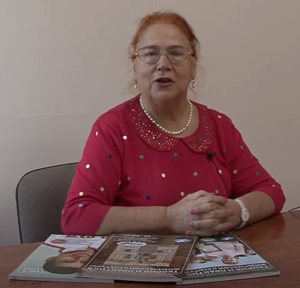Significant indicators of variation cardio intervalometry of 400 m runners at the training stage
ˑ:
Postgraduate student Liu Siliang1
Dr. Hab., Professor I.A. Cherkashin2
PhD, Associate Professor E.V. Cherkashina3
PhD, Associate Professor A.I. Ivanov4
1Moscow State Academy of Physical Education, Malakhovka, Moscow Region
2M.K. Ammosov North-Eastern Federal University, Yakutsk
3Hainan Normal University, Haikou, China
4Arctic State Agrotechnological University, Yakutsk
Objective of the study was to identification of significant indicators of variational cardiointervalometry of 400 m runners at the training stage.
Methods and structure of the study. The experiment involved 24 athletes specializing in long sprints, whose age was 16,92 ± 0,72 years, their sports result in the 400 m run was 49,76 ± 0,86 s. We used the diagnostic automated complex «Cardio+» to determine the indicators of variational cardiointervalometry at rest, paired correlation analysis using the licensed IBM SPSS Statistics 22.0 program. The research was carried out on the basis of a sports school in Panjin, China.
Results and conclusions. To monitor the functional state of qualified runners aged 16–18 years, specializing in long sprints, it is advisable to use parameters characterizing the predominance of the type of autonomic regulation, vagal, sympathotonic and humoral-metabolic influences on regulation, as well as the degree of centralization of heart rate control, the activity of the body’s regulatory systems and functional the state of the cardiovascular system as a whole.
Keywords: athletics, long sprint, functional state, correlation analysis.
References
- Krivoruchenko E.V., Ivanov A.I., Shadrina O.V., Sentizova M.I. Vzaimosvyaz urovnya fizicheskoy podgotovlennosti i tipa vegetativnoy regulyatsii serdechnogo ritma legkoatletov [The relationship between the level of physical fitness and the type of autonomic regulation of the heart rate of track and field athletes]. Teoriya i praktika fizicheskoy kultury. 2019. No. 10. pp. 35-37.
- Lubysheva L.I. Mediko-biologicheskoye obespecheniye sporta vysshikh dostizheniy i fizicheskoy kultury: sovremennyye vyzovy [Medical and biological support for elite sports and physical culture: modern challenges]. Teoriya i praktika fizicheskoy kultury. 2014. No. 7. 74 p.
- Nikitushkin V.G., Cherkashin V.P., Chesnokov N.N., Zuev S.N. Opredeleniye funktsionalnoy stoimosti osnovnykh sredstv trenirovki yunykh begunov na korotkiye distantsii [Determination of the functional cost of the main means of training young short-distance runners]. Teoriya i praktika fizicheskoy kultury. 2018. No. 1. pp. 40-42.
- Chzhu Kh., Zinovenko K.A., Vrublevskiy E.P. Organizatsiya trenirovochnogo protsessa begunov na korotkiye distantsii na etape nachalnoy sportivnoy spetsializatsii [Organization of the training process for short-distance runners at the stage of initial sports specialization]. Teoriya i praktika fizicheskoy kultury. 2022. No. 12. pp. 102-104.
- Ameti V., Asllani I., Iseni A. Anthropometric relations by measures and results in some motor tests success in running the 400m in 16-year old students. Research in Kinesiology, 2013; 41(2): 223-22.
- Okudaira M., Kuki S., Yoshida T., Fukuda D.H., Tanigawa S. Load characteristics of sprint interval training according to 400m running performance: competitive level comparison. International Journal of Sport and Health Science, 2019;17: 148-154.
- Schiffer J. The 400 meters. NewStudiesinAthletics, 2008; 23(2): 7-13.



